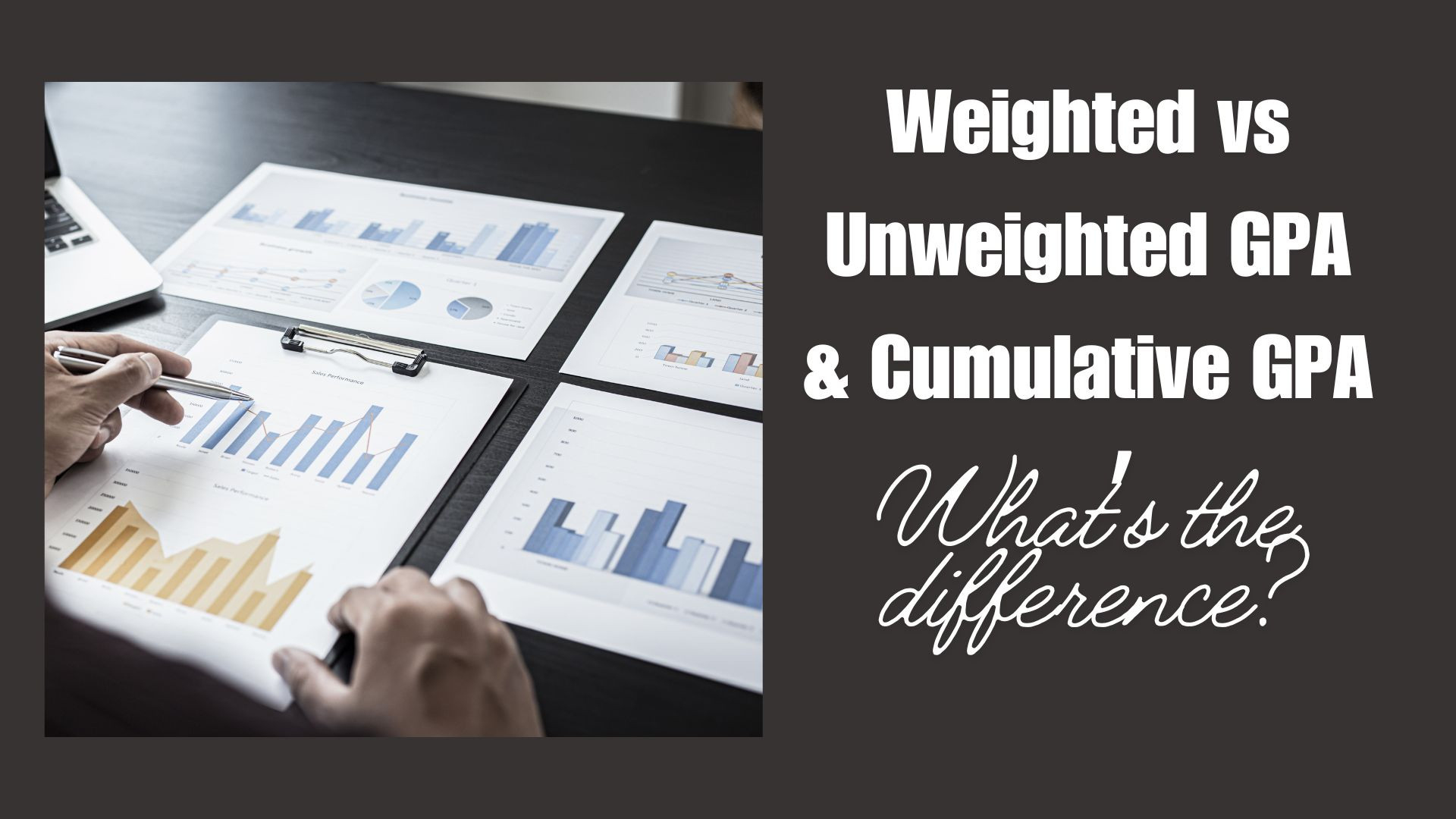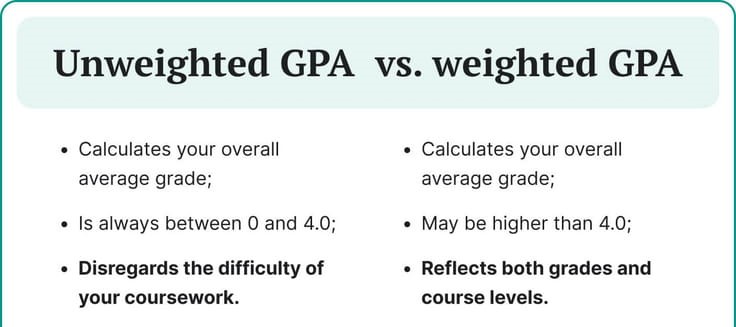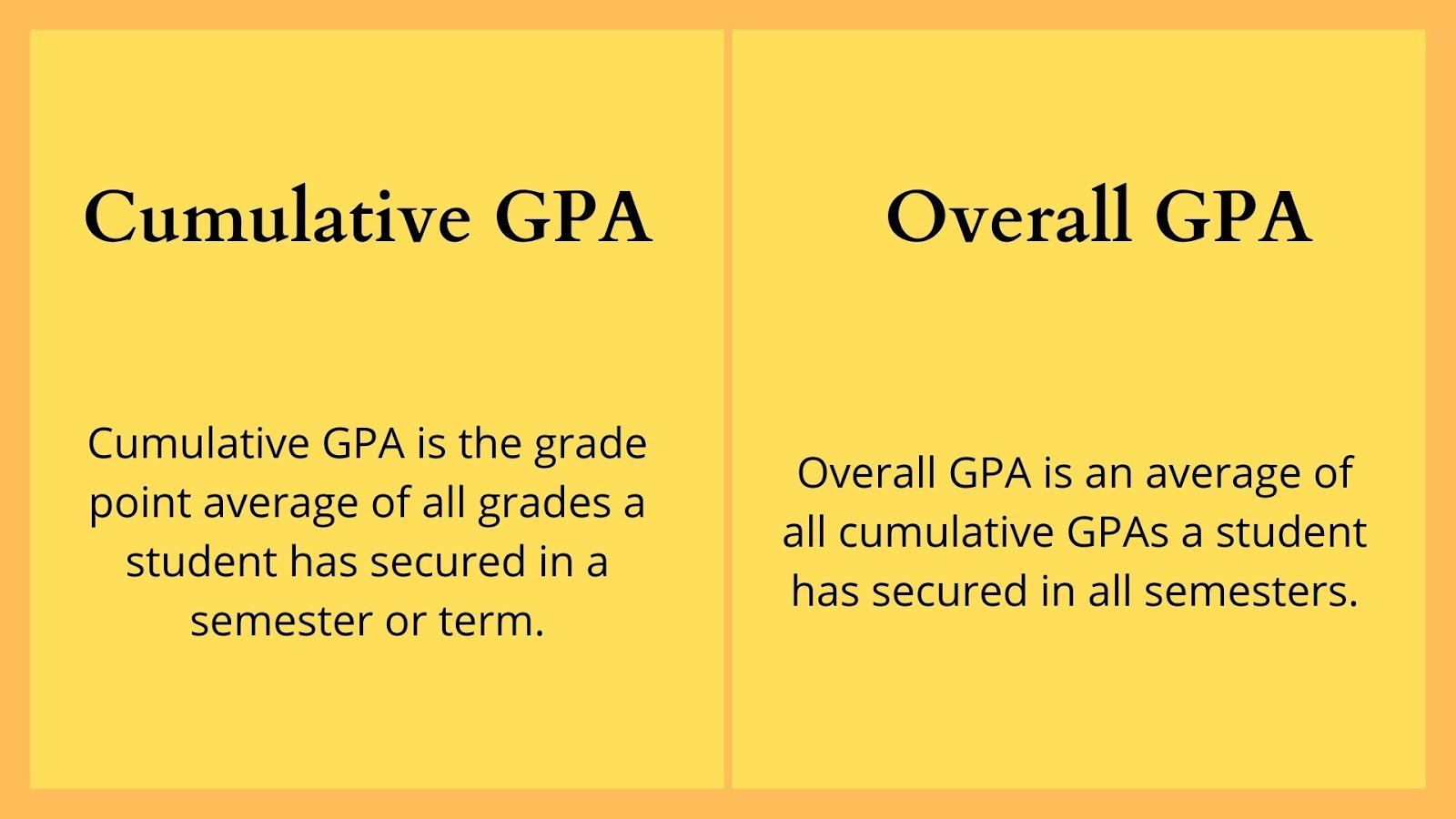
Weighted vs Unweighted GPA & Cumulative GPA: What's the Difference?
GPA is one of the most crucial elements considered during the admission procedure for students during college admissions. However, the process by which the GPA is calculated is very different for different schools and colleges. Some schools make use of weighted GPAs, and some make use of unweighted GPAs. The following article will help provide information regarding the difference between the two types of GPA calculation made by the schools and how they impact the overall career of the students.
The GPA, or grade point average, is an essential part of the college application. However, different colleges make use of weighted GPAs or unweighted GPAs.

Weighted GPA vs unweighted GPA
Unweighted GPA calculates the average grade of a student on a scale of 4.0 regardless of the difficulty level of the class. It means that a student getting an A grade in English in class 9 is the same as the grade received in AP language. However, on the other hand, weighted GPAs take the difficulty level into account the difficulty level of the class when assessing the grades of the students.
- Unweighted GPA
Traditionally, GPA is calculated on the unweighted scale. The unweighted GPA is calculated on a scale ranging from 0 to 4. It does not consider the difficulty level of the student's coursework when calculating GPA.
Steps for calculating unweighted GPA
For instance, the student has four subjects: AP English, AP Spanish, AP Art History, AP Statistics and AP Chemistry, with each subject having a maximum grade point of 4. The student received an A in English (4 points), an A in Spanish ( 3 points), a B in history art (3 Points), a C in history (2 points) and a B in statistics ( 3 points). The total GPA received by the student is 4+4+3+3+2=16. The average GPA received by the student is 16/5 = 3.2.
- Weighted GPA
The weighted GPA is considered essential in evaluating the accomplishment of the student in their academic life. The weighted GPAs use the difficulty level rather than allocating similar grades to every student. The weighted GPA is measured on a scale of 0 to 5.0. However, some scales go higher than 5.0. If a student gets an A in the AP class, it can be converted into a 5.0 weighted GPA. On the other hand, a grade A in a regular class would be converted into a 4.0 on the weighted GPA scale.
Steps for calculating weighted GPA
Calculating the weighted GPA is a very tricky process. For instance, a student is attending 5 AP classes. These AP classes include AP English, AP Statistics, AP Spanish, AP Chemistry, and AP History Art. Let us assume the student may get 4 grade points in each subject. However, since the student is also an average human, it fails to get an A in each subject. The student gets an A in AP English (5 Points), a B in AP statistics (4 points), an A in AP Spanish (5 Points), a C in AP Chemistry (3 Points), and a B in AP history arts (4 Points). The total of all these points is 5+5+4+4+3= 21. Now, the total is divided by the total number of subjects: 21/5= 4.2. Therefore, the weighted GPA of the student is 4.2.
Cumulative GPA
Cumulative GPA is the average of all the grade points received by the student during their entire schooling.

Steps for calculating Cumulative GPA
To assess the total grade points received by the student, cumulative grade point is calculated. During calculating cumulative grade points, separate calculation is optional for every grading period. The steps followed in calculating weighted and unweighted GPA should be followed. However, this should be done for all classes to calculate cumulative GPA.
Importance of weighted and unweighted GPA
Different colleges and schools have their system of providing GPAs to students. However, as the colleges want to compare the different students, they convert the GPA of the students so that they can be treated on an equal basis. This shows that colleges can consider any type of GPA, and it is dependent on the college.
Which is better, weighted GPA or unweighted GPA
The honest answer is no one is better, as colleagues use any type of GPA depending on their choice. However, a weighted GPA provides more information about the academic success of the student in the schools, which is more desirable for the colleges during the admission process. However, the unweighted GAP provided little information regarding students' academic success. As the student has no control over the type of GPA that the college will use for the admission process, it becomes challenging to say which type of GPA is better for the student.


